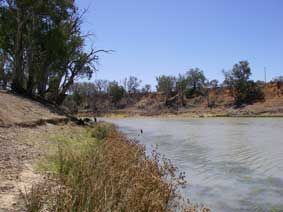Major Group: Insecta
Order: Coleoptera
Family: Limnichidae |
Descriptive Features:
Adults
head hypognathous and strongly retracted
antennae and mouthparts usually concealed by prosternum, which is produced forward
antennae slender, distinctly pubescent with segments 7-10
antennal segment 1 only slightly longer than 2
antennal segments 7-10 usually longer than wide, widest at middle and narrowed at either end
frontoclypeal suture distinct
body ovate, usually less than 2 times as long as wide, densely pubescent
pronotal and elytral bases equal in width and closely joined, forming an unbroken lateral outline
posterior edge of pronotum simple
lateral pronotal carinae complete, sharply defined
ventral portion of the notum, (hypomeron) on each side joined directly to the sternum by notosternal suture
pleuron reduced and concealed
mesocoxal cavities moderately to widely separated
ventrite 1 not divided by hind coxae
abdomen with at least 3 connate ventrites
tarsi simple, 5-segmented
outer edge of middle tibia simple
size: 3mm
Larvae
head prognathous or slightly declined
antennae with 6 well separated stemmata on each side
apex of antennal segment 2 truncate
spiracles biforous, with 2 parallel openings
epicranial stem present
labrum separated from head capsule by complete suture
mesal surface of mandibular base simple or slightly expanded
maxillary palp 4-segmented
legs 5-segmented, including claw
size: |

|
Limnichidae larva |
|
|

|
Limnichius australis |
|
Taxonomic Checklist: Genera
Limnichus 3 species
Byrrhinus 4 species
Paralimnichus castaneus Lea |
|
Distribution: NT, Qld, WA, Tas, NSW, SA
Sensitivity Rating: SIGNAL grade 4
Functional Feeding Group: gathering collectors (adults), unknown (larvae) |

|
Wakool River at Kyalite, NSW |
|
|
Ecology: Instream habitat: Adult limnichid beetles occur in riparian areas alongside creeks and rivers. Large numbers may be attached to lights at night but they are not frequently collected in routine freshwater sampling, reflecting a preference for near-terrestrial habitats. Larvae live in sand, mud and damp leaf litter.
Feeding ecology: Adults of Australian Limnichidae species appear to feed on decaying organic matter but Asian species have been recorded as feeding on algae and moss.
Habit:
Life history:
|
| |
Information Sources: Lawrence 1992, Lawrence & Britton 1991, Hendrich et al. 2004, Williams 1980
Key to Genera: Matthews 1980 part 4 (SA adults partial)
Key to Species: none |
|
|
|